Description
Including the Marble Mountain, Russian, and Trinity Alps Wilderness areas
Wildflowers of California’s Klamath Mountains features flowering plants found within one of the most biodiverse temperate mountain ranges on Earth. This photographic collection is representative of the most common, beautiful, and unique plants across this amazing region.
- 629 species, subspecies, and varieties of wildflowers
- Over 800 full color images organized by flower color
- Localized, detailed species descriptions
- Destinations to find flowers throughout the year
The Klamath Mountains are a fascinating and botanically diverse area situated at the the crossroads of the Coast Range, Modoc Plateau, Sacramento Valley, Cascade Range, and Sierra Nevada the Klamath Mountains and hold representative species from each. Combine that with their attendant geology, topography, and climate, and the floristic diversity is second to none for a temperate region.
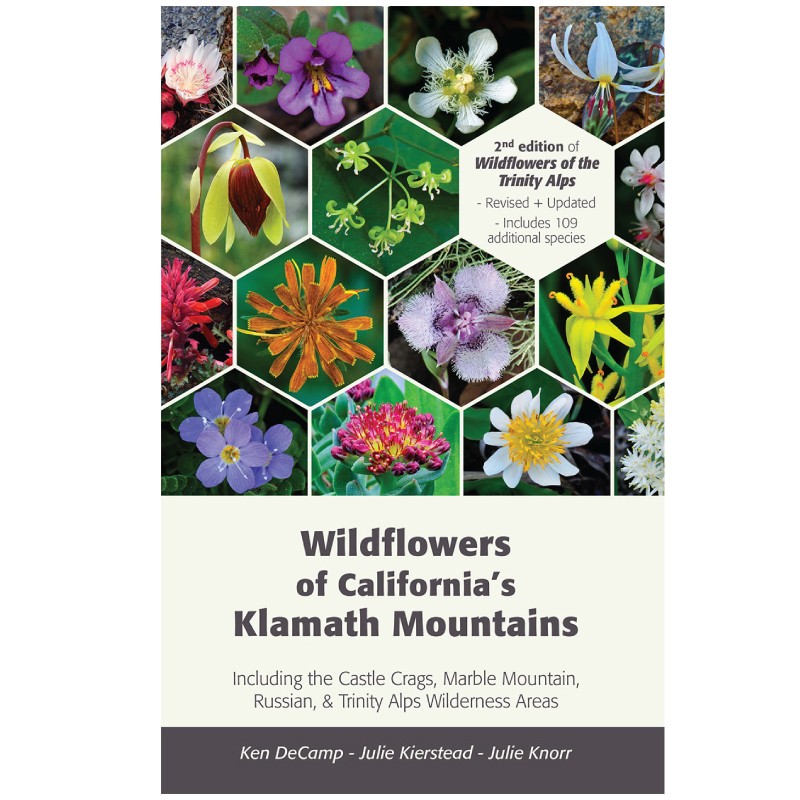
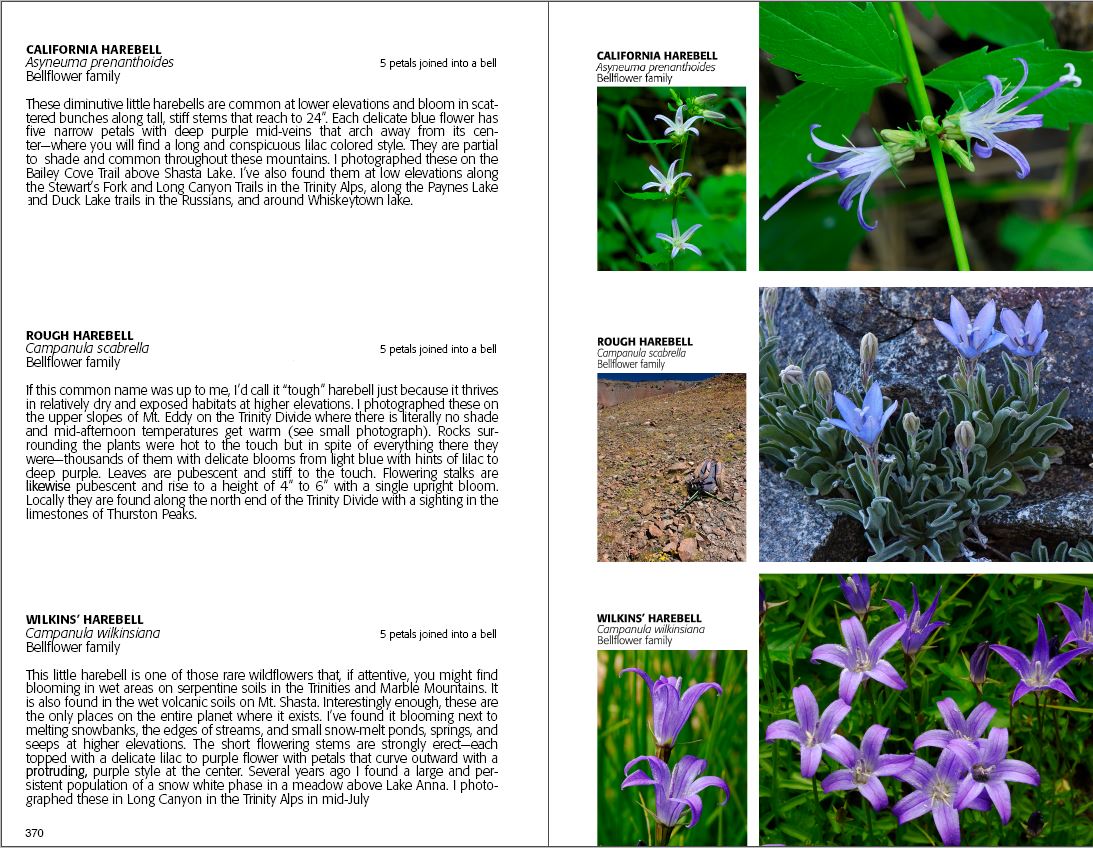
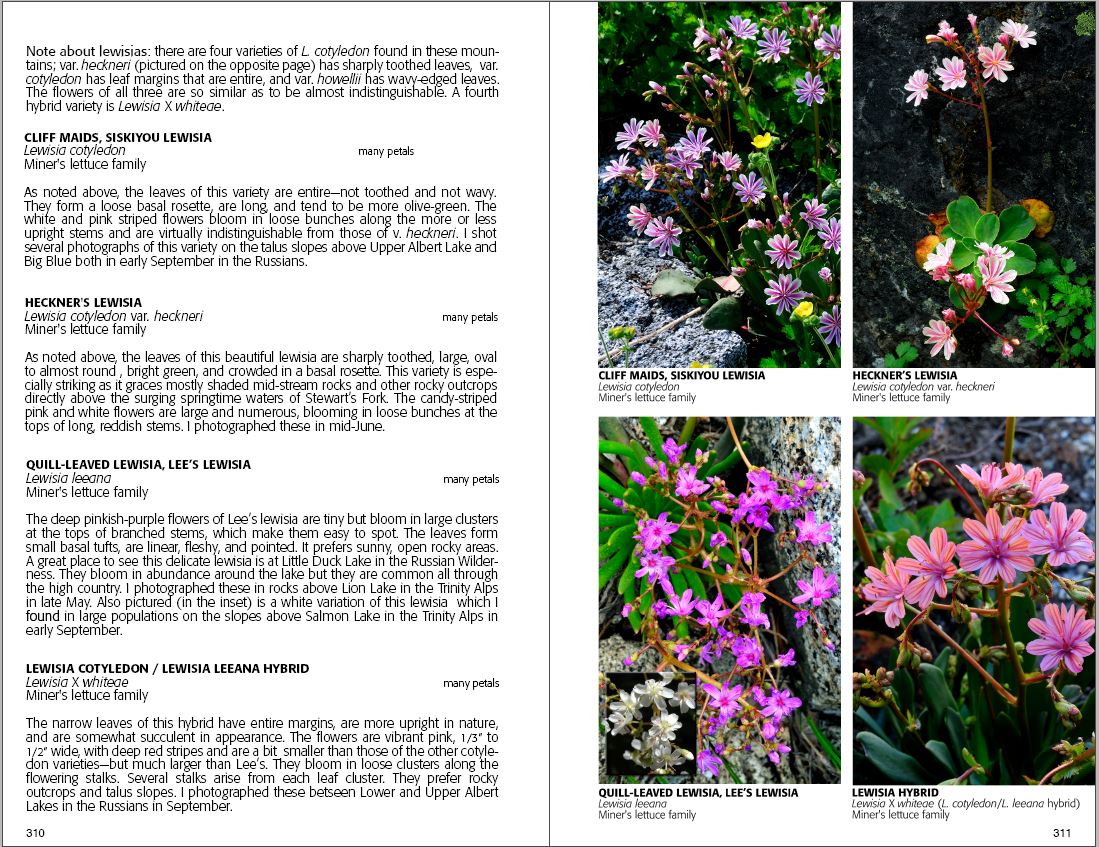
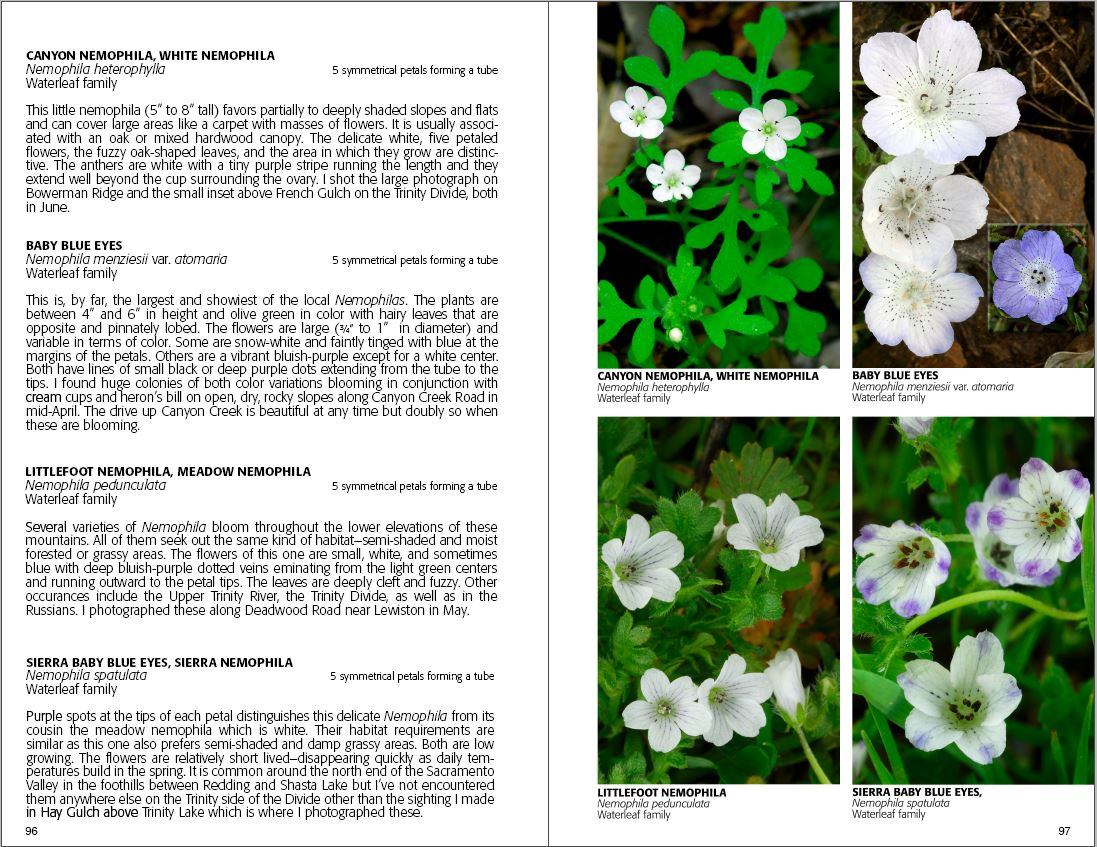
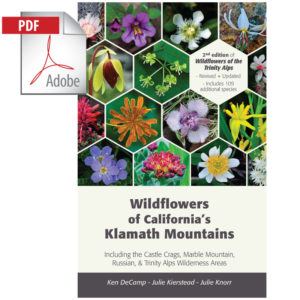
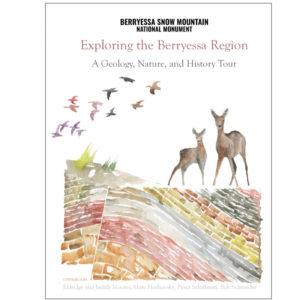
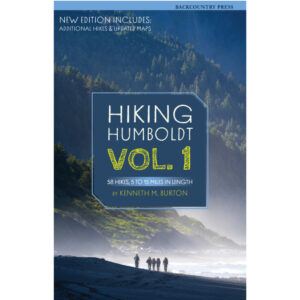
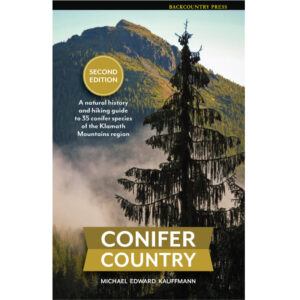
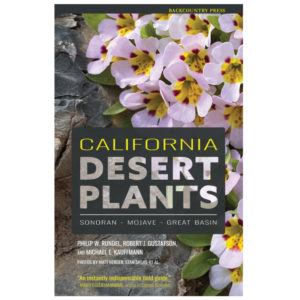
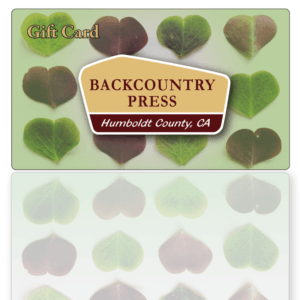
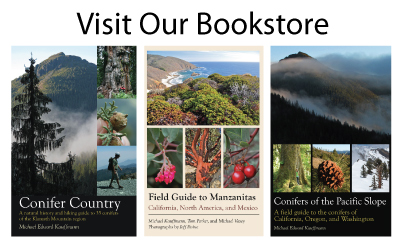
April Joyce (verified owner) –
This is a beautifully put together book which I am sure will be a great resource for me for many years to come.
Tyanna SB (verified owner) –
It feels a bit strange to review a wildflower field guide to a place that is largely off-limits at the moment due to a statewide closure order prompted by the harrowing 2020 fire season California and Oregon are experiencing; however, Wildflowers of the Trinity Alps is the perfect diversion for sore, smoke-irritated eyes.
Descriptions are clearly written and non-technical, with flowers grouped primarily by color and then by flower structure/plant family within the color sections, along with general locations and habitat. The beginning of the book contains photos of commonly found types of flowers within the Trinities, each with clearly labeled flower parts.
The photography is beautiful and vivid, and clearly captures the distinguishing features of each wildflower species highlighted. Some personal favorite photos in the book — though it is difficult to list just a few — include the three Calochortus species (p. 257), California ground-cone (Kopsiopsis strobilacea, p. 317), and the iconic California pitcher plant (Darlingtonia californica, p. 209).
This is an excellent regional plant guide for those who prefer visuals and do not necessarily want to take the deep dive into the descriptive language of botany with a Jepson manual (though nothing wrong with that either!). If only I had a copy along with me while hiking Mount Eddy last month. Kudos to the authors and Backcountry Press for a very nicely-done field guide!
Michael Derrig (verified owner) –
An excellent guide that appears useful and functional in identifying flowers of the region, especially for the average non-botanical wilderness wanderer.
Harald Frey (verified owner) –
When we visited the Trinity Alps last year in late summer we wondered about several wildflowers we saw. We plan another visit in summer this year and thus the book will be a very valuable helper in our planning and during the trip. The color photos are really high quality. I also like the descriptions of the flowers with attention to details about the plants but also about things like the use as tea or in beer and animals that love the flowers too. Especially helpful will be the descriptions where we can expect to find these flowers. A valuable addition to all the information would have been a little summary which flowers bloom in March, May, July, or September. But we will find out reading the descriptions.
Nathan McCanne (verified owner) –
This guide is incredibly through and has beautiful pictures! I love taking pictures of flowers, and I hope to be able to ID while I’m outside rather than having to wait to use the internet when I get back home.
It’s also a lovely coffee table book!
Charley Fitch (verified owner) –
The photography is excellent, the descriptions are very good. I found the location very helpful. I am amazed at the numbers of plants included. The only things missing for me were a better description of the height of some of the plants. And as the book concentrates on the flowers it seldom shows the leaves. Because the flowers are so short lived I use the foliage to at least get the plant to the genus. GREAT BOOK.